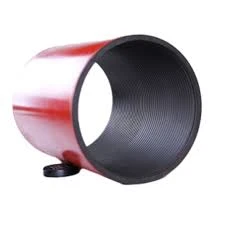- Afrikaans
- Albanian
- Amharic
- Arabic
- Armenian
- Azerbaijani
- Basque
- Belarusian
- Bengali
- Bosnian
- Bulgarian
- Catalan
- Cebuano
- Corsican
- Croatian
- Czech
- Danish
- Dutch
- English
- Esperanto
- Estonian
- Finnish
- French
- Frisian
- Galician
- Georgian
- German
- Greek
- Gujarati
- Haitian Creole
- hausa
- hawaiian
- Hebrew
- Hindi
- Miao
- Hungarian
- Icelandic
- igbo
- Indonesian
- irish
- Italian
- Japanese
- Javanese
- Kannada
- kazakh
- Khmer
- Rwandese
- Korean
- Kurdish
- Kyrgyz
- Lao
- Latin
- Latvian
- Lithuanian
- Luxembourgish
- Macedonian
- Malgashi
- Malay
- Malayalam
- Maltese
- Maori
- Marathi
- Mongolian
- Myanmar
- Nepali
- Norwegian
- Norwegian
- Occitan
- Pashto
- Persian
- Polish
- Portuguese
- Punjabi
- Romanian
- Russian
- Samoan
- Scottish Gaelic
- Serbian
- Sesotho
- Shona
- Sindhi
- Sinhala
- Slovak
- Slovenian
- Somali
- Spanish
- Sundanese
- Swahili
- Swedish
- Tagalog
- Tajik
- Tamil
- Tatar
- Telugu
- Thai
- Turkish
- Turkmen
- Ukrainian
- Urdu
- Uighur
- Uzbek
- Vietnamese
- Welsh
- Bantu
- Yiddish
- Yoruba
- Zulu
Exploring API Tubing Couplings for Oil and Gas Industry Applications
Understanding API Tubing Couplings A Crucial Element in the Oil and Gas Industry
In the oil and gas industry, the efficient and safe transport of hydrocarbons is paramount. One of the pivotal components in this process is the API (American Petroleum Institute) tubing coupling. These couplings are designed to connect sections of tubing and are essential for ensuring the structural integrity and seamless interaction of piping systems used in drilling and production operations. This article delves into the significance, types, and specifications of API tubing couplings.
What are API Tubing Couplings?
API tubing couplings are specialized fittings made to connect lengths of tubing used in oil and gas wells. The primary function of these couplings is to provide a strong and pressure-tight connection, enabling the efficient flow of oil, gas, or other fluids from the well to the surface. The API specification outlines the standards for these fittings, ensuring that they meet industry requirements for performance and safety.
Importance of API Couplings
The reliability of well operations heavily relies on the proper installation and functioning of tubing couplings. In high-pressure environments typically encountered in drilling operations, any failure in the coupling can lead to catastrophic failures, resulting in financial losses and environmental hazards. Thus, using API-approved couplings not only guarantees quality but also enhances the overall safety and efficacy of the drilling process.
Types of API Couplings
API tubing couplings come in various types depending on the specific application and environmental conditions
api tubing couplings

1. Standard Couplings These are the most commonly used types that conform to API specifications. They are primarily utilized for general tubing connections.
2. Premium Couplings Designed to provide higher strength and better sealing properties compared to standard couplings, premium couplings are used in environments with extreme pressures and temperatures.
3. Specialty Couplings These couplings are engineered for specific applications, such as those involving corrosive fluids or unique well configurations. They may include features that enhance their resistance to wear, corrosion, and other forms of damage.
Specifications and Standards
API specifications are critical in the manufacture and testing of tubing couplings. Key specifications include the material used, which is typically carbon steel or alloy steel, and mechanical properties such as yield strength and tensile strength. Each coupling must undergo rigorous testing to ensure that it can withstand the demands of high-pressure environments. The API 5CT specification is particularly relevant, as it stipulates the requirements for casing and tubing, including coupling dimensions and tolerances.
Conclusion
API tubing couplings play an indispensable role in the transportation of hydrocarbons in the oil and gas industry. They ensure that tubing sections are securely connected, allowing for maximum efficiency while maintaining safety standards. Understanding the types, importance, and specifications of these couplings is crucial for industry professionals who seek to optimize drilling and production operations. As technology evolves and drilling practices become more sophisticated, the demand for specialized couplings will continue to grow, making thorough knowledge of API standards more essential than ever. Investing in high-quality API tubing couplings is not just a matter of compliance, but a commitment to safe and sustainable practices in the pursuit of energy resources.
-
Tubing Pup Joints: Essential Components for Oil and Gas OperationsNewsJul.10,2025
-
Pup Joints: Essential Components for Reliable Drilling OperationsNewsJul.10,2025
-
Pipe Couplings: Connecting Your World EfficientlyNewsJul.10,2025
-
Mastering Oilfield Operations with Quality Tubing and CasingNewsJul.10,2025
-
High-Quality Casing Couplings for Every NeedNewsJul.10,2025
-
Boost Your Drilling Efficiency with Premium Crossover Tools & Seating NipplesNewsJul.10,2025







